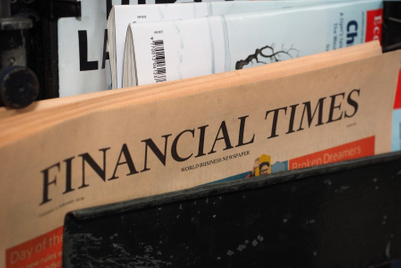
According to eMarketer, online advertising spend in Asia-Pacific reached US$24.8bn in 2011, making the region second only to the US, with $34.5bn. Final tallies for 2012 are expected to show a 26 per cent year-on-year increase for Asia-Pacific, with online spend hitting $31.4bn.
Those are big numbers — a seemingly unstoppable rise. So what’s at the heart of this growth, and are we all ready for the next step? Firstly, here’s a quick (and by no means exhaustive) recap of why digital media is grabbing the marketer’s dollar:
It’s the most creative medium. The digital canvas for creativity is almost unlimited in its scope — there’s potential for personalised and dynamic messages, and stand-out formats and interactivity.
It’s the most accountable medium. Provided the buyer-seller ecosystems finally agree that the click-through rate is a pretty useless metric in isolation, and that measuring ultimate attribution, specific audience reach, and brand impact are far more useful to assess ROI (and all totally possible with not much effort), then digital is by far the medium which allows the most accountability.
|
It’s the most likely to reach consumers across their whole day. Research proves that digital in all its formats is the principle platform for consumers across the demo-graphic spectrum.
It’s the most targeted medium. Publisher first-party data that permits targeting by demographic or interest; aggregated third-party data allowing targeting by purchase intent; client data that facilitates re-targeting of interested consumers — all adds to the potential for one-to-one messaging.
Here’s the rub: yes, digital marketing is amazing, but the rules and possibilities are shifting constantly. So, there are a few key questions that all sides of the ecosystem could do with answering, because the next phase of digital marketing means we all need to jump forward together. Whether it’s creative, data, social or programmatic trading, you’d better have a position.
If digital advertising allows almost unlimited creative possibilities, why do so few advertisers take advantage? Sorry to say, but a lot of digital creative is still often flat and uninspiring, symptomatic of a development process that has had to go through too many layers of management before being approved. Imagery is bland, copywriting seems a forgotten art, and all too often the message is lowest-common-denominator stuff. Creatives tend to do the same regardless of who views it. It doesn’t have to be that way. How about really starting to invest time and talent to ensure that the media and creative divorce, which seems all too evident to me, is reconciled? Can we all try and make creative and media love each other again?
Data, data everywhere — which drop to drink? The amount of data generated by a digital ad campaign in 2012 is staggering. There’s gold in your databases and it’s really worth the time and effort to work out where it is.
Did you notice that the brand-to-consumer dialogue has shifted… forever? Digital media offers the consumer almost limitless choice to source the information they seek — meaning the old relationships between content creators, audiences and marketers have changed for good. Publishers run the risk of losing relevance in an age of social journalism, while advertisers are finding that immersing themselves in the conversations their customers are having about their product can be a dangerous (but tantalisingly rewarding) activity. We need to be agile enough to regain our balance and find our place in the new world.
Have you worked out how to buy digital media? Think again. Programmatic trading presents fantastic opportunities for advertisers to reach the right individual, at the right time, in the right media context and pay the right price for doing so. And all in real time. But as the stock market found out after the big bang in the 1980s, moving to electronic trading meant that many (although not all) of the fundamentals of the businesses had to change. The media world is heading rapidly in that direction, and we have to be ready to embrace that change. Because when it comes, it’s going to be big, and some in the media world will win, and others are going to lose. Don’t get caught out.
Is your thinking up to (real-time) speed?
Jon Slade is commercial director, digital advertising at the Financial Times


.jpg&h=334&w=500&q=100&v=20250320&c=1)



.png&h=334&w=500&q=100&v=20250320&c=1)
.png&h=334&w=500&q=100&v=20250320&c=1)
.png&h=334&w=500&q=100&v=20250320&c=1)

.png&h=334&w=500&q=100&v=20250320&c=1)



+(1).jpg&h=268&w=401&q=100&v=20250320&c=1)


.png&h=268&w=401&q=100&v=20250320&c=1)

